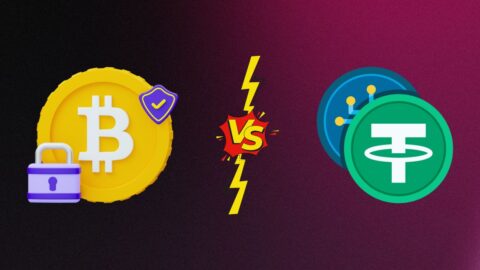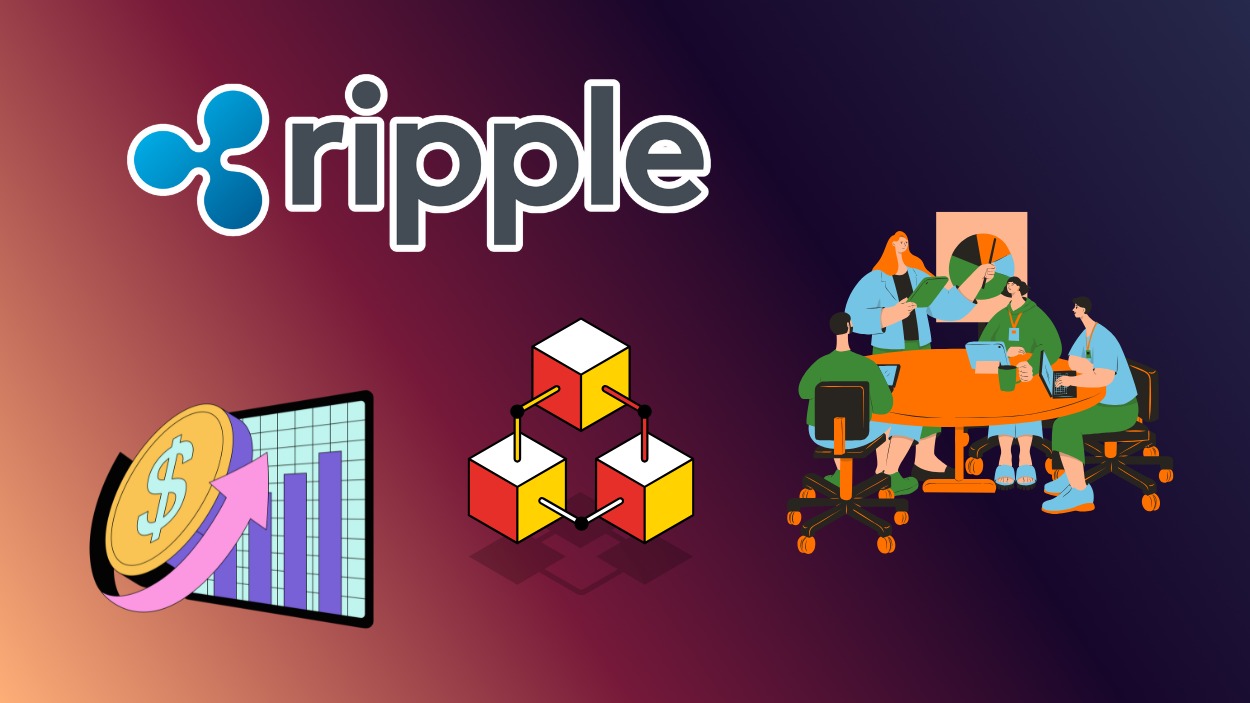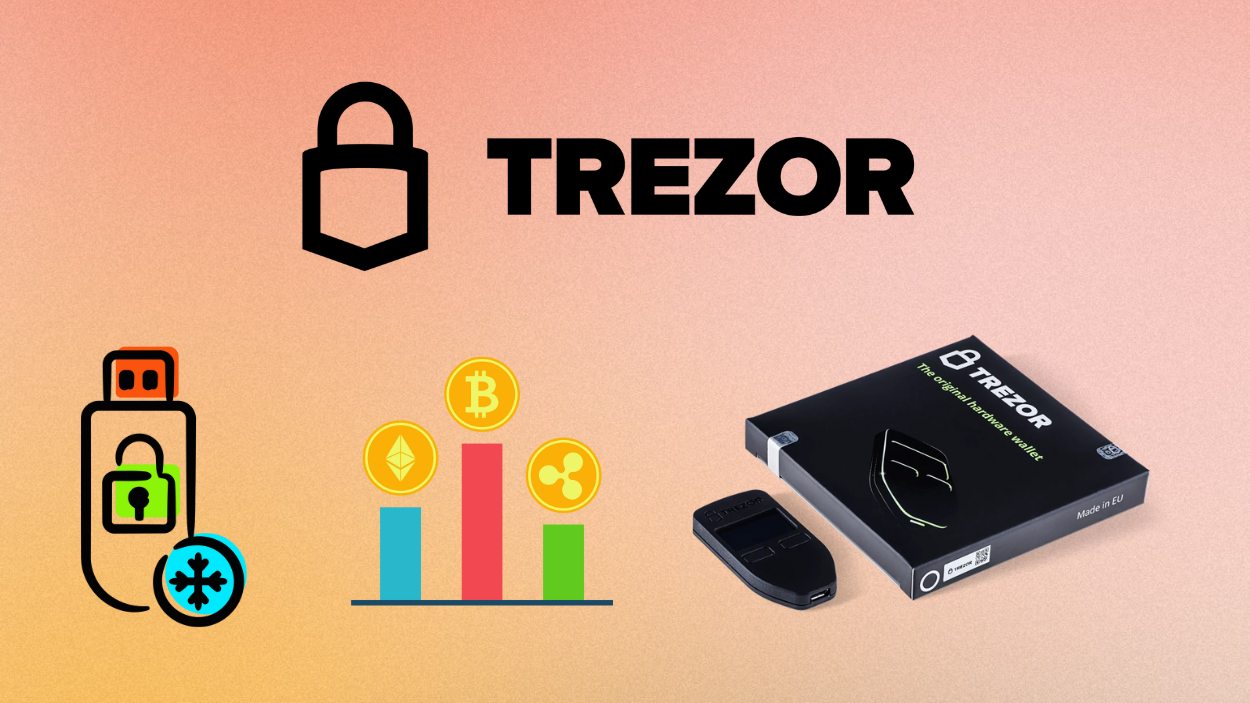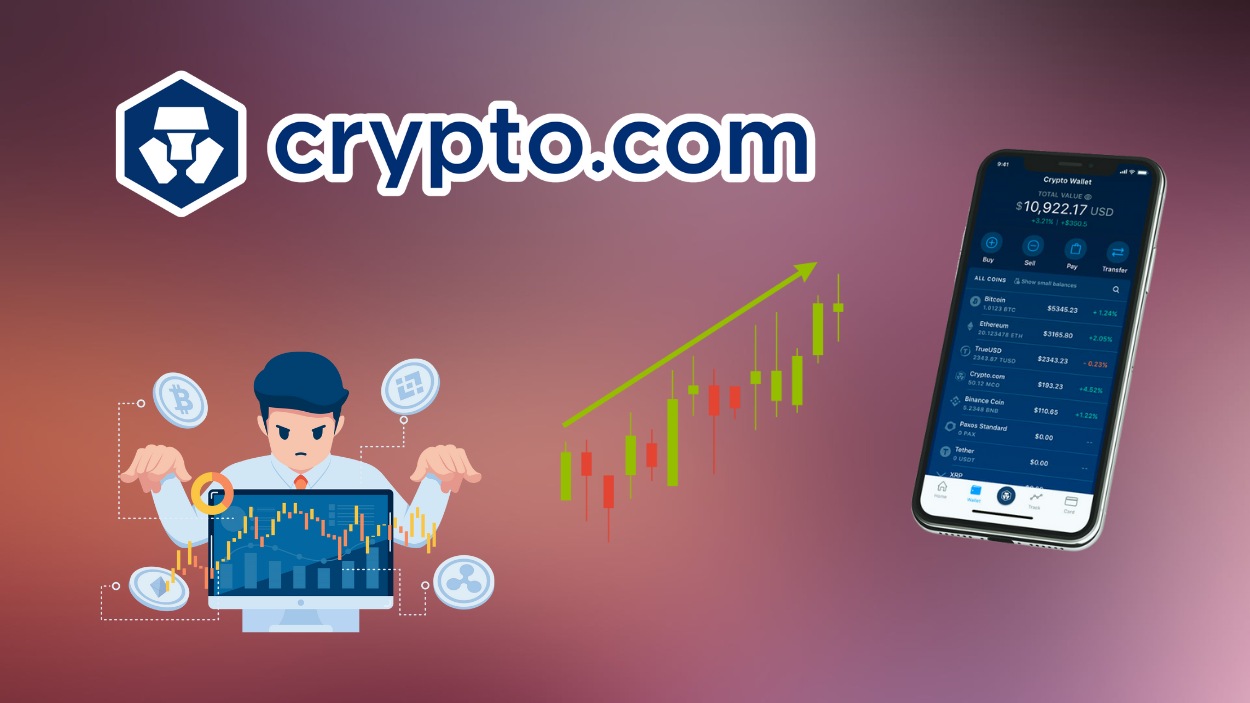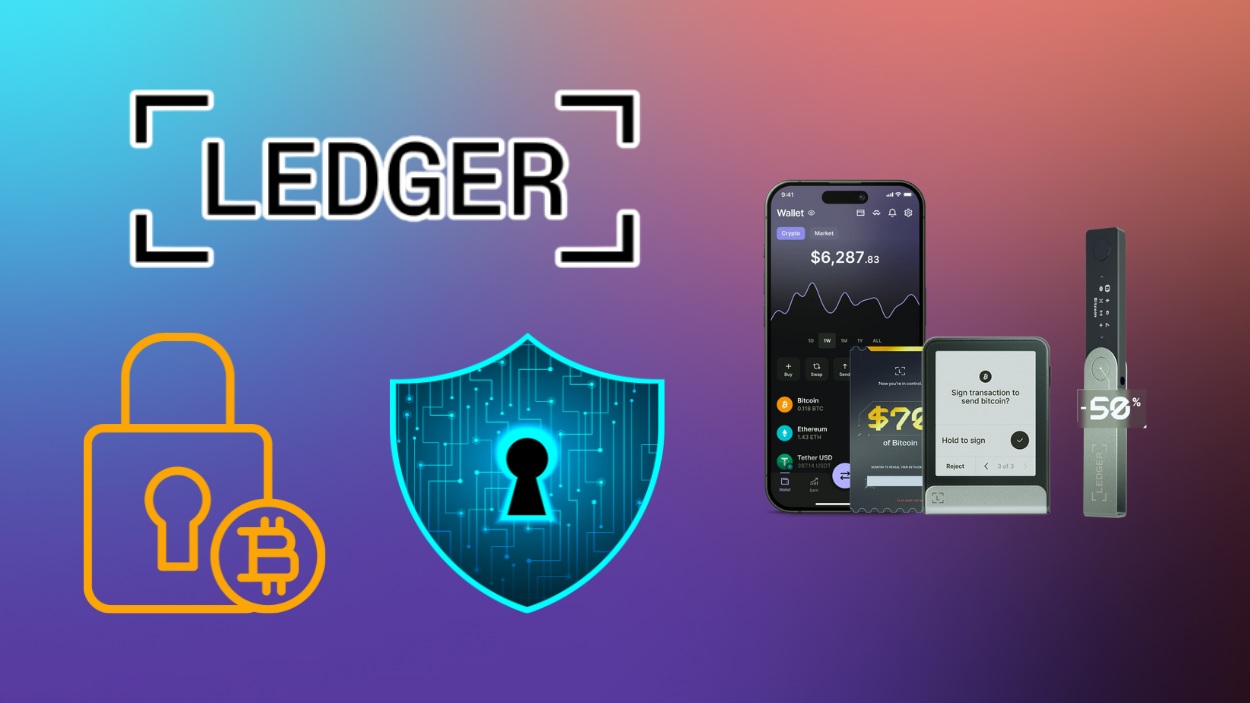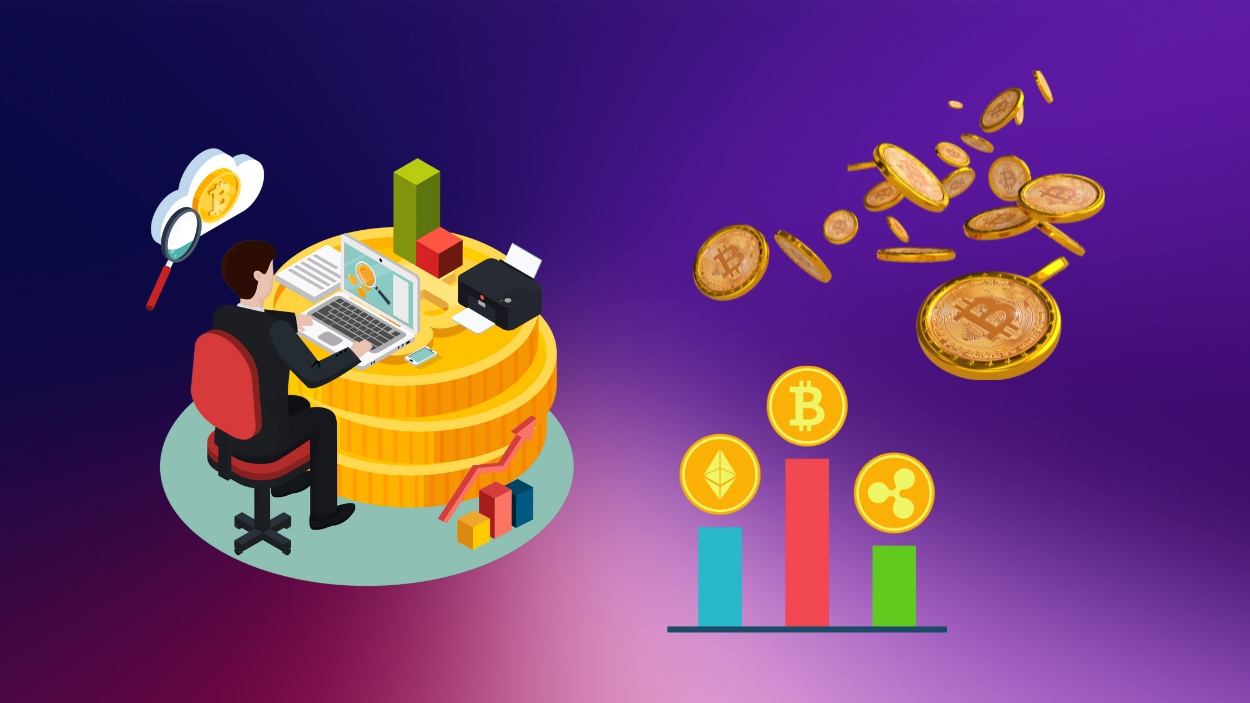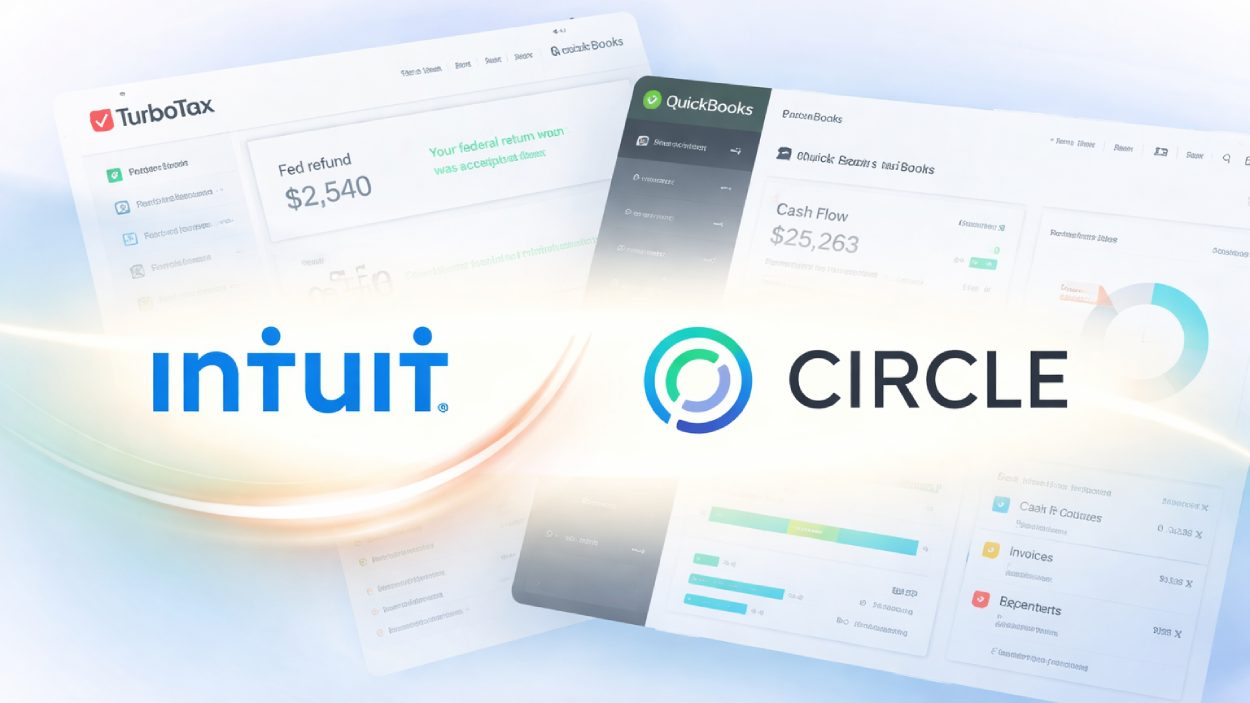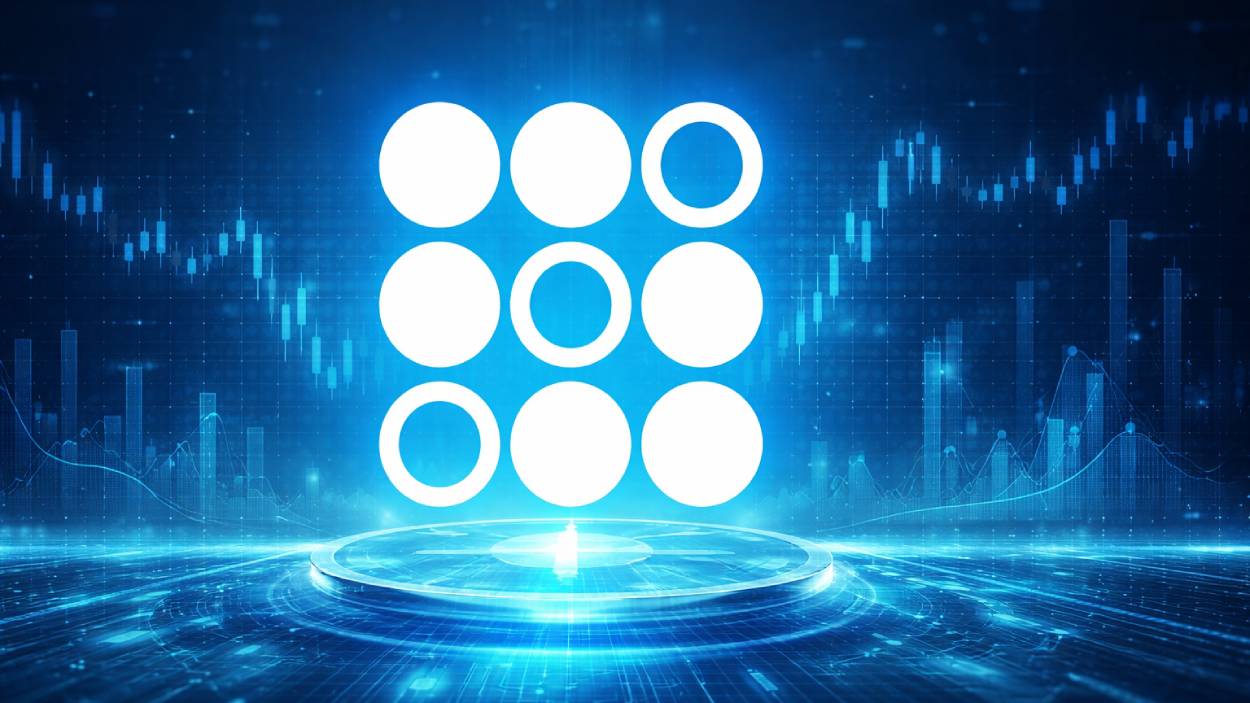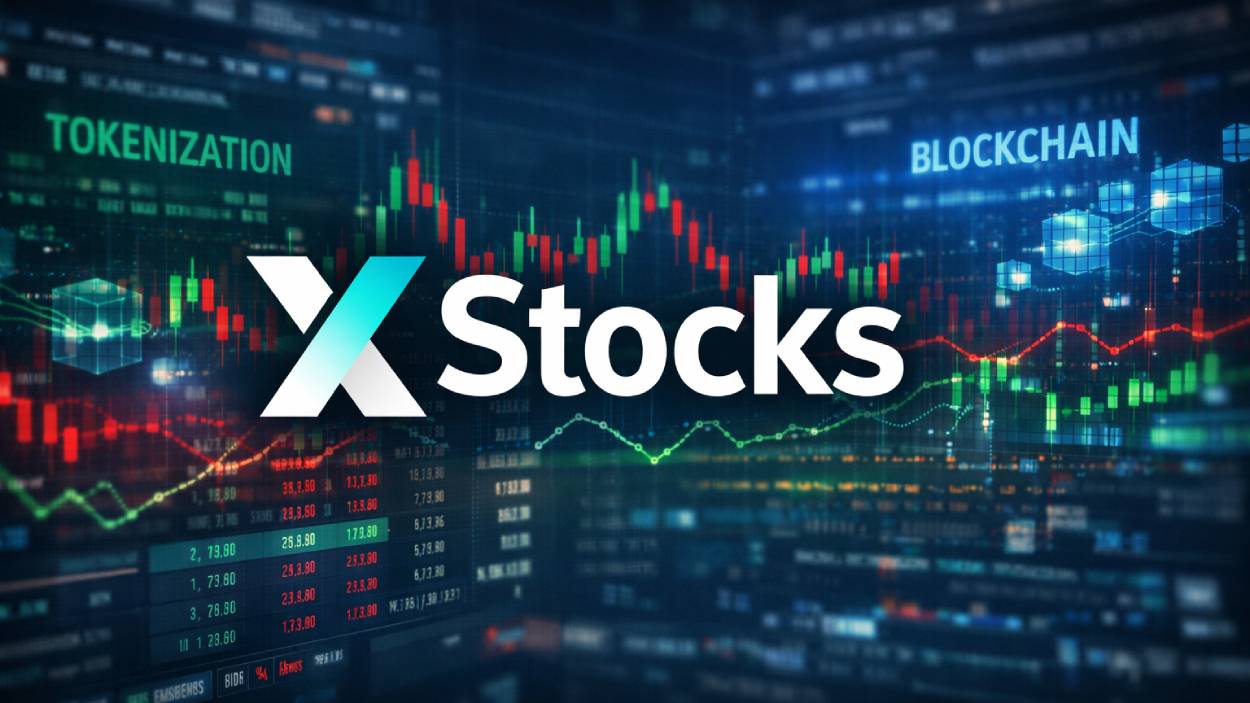Imagine a world where securing a loan doesn’t require stepping into a bank or negotiating with traditional lenders. Instead, you find people just like you, willing to invest in your needs, dreams, or business ventures. This is the world of peer-to-peer lending, or P2P lending, a marketplace-driven phenomenon that’s transforming the way we think about loans and investments. What started as a niche alternative has rapidly evolved into a $200 billion industry, connecting borrowers and investors directly, bypassing intermediaries. This article delves into the latest P2P lending statistics for 2025, uncovering key insights and data points that illustrate the growth, trends, and opportunities in this dynamic sector.
Editor’s Choice
- P2P loans had an average default rate of 17.3%, while traditional loans had an average delinquency rate of 2.78%.
- The P2P lending market size was valued at $139.8 billion in 2024, with expectations to reach approximately $1.38 trillion by 2034, indicating a CAGR of 25.73% from 2025 to 2034.
- The Buy-Now-Pay-Later (BNPL) market, integral to P2P lending, is projected to surpass $160 billion by 2032, highlighting its rapid expansion.
- Block’s Cash App reported a 16% gross profit growth in the holiday quarter of 2024, down from 25% the previous year, indicating a deceleration in growth.
- Many P2P loans yield net returns of 5-9% per year, with some investors reporting annual returns exceeding 10%.
- In the United States, P2P lenders’ revenue has remained steady, reaching approximately $1.7 billion in 2024.
- P2P platforms offering potential returns ranging from 6% to 12% are attracting investors seeking higher yields and portfolio diversification.
Global Peer-to-Peer Lending Market Overview
The P2P lending market has seen remarkable growth over the past decade, primarily driven by advances in technology and shifts in consumer behavior. Here are some of the key statistics and insights into the global landscape:
- Asia-Pacific leads in P2P lending volume, contributing over 50% of the total global market, with China being the largest single market.
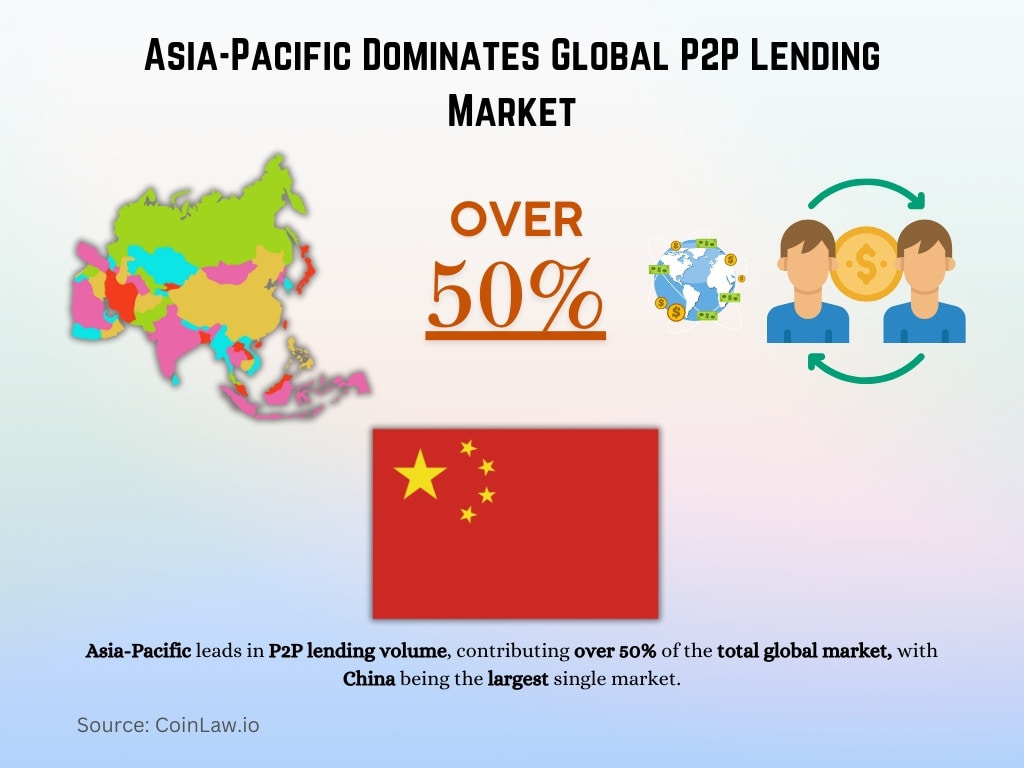
- North America’s P2P market grew by 13% in 2023, reaching a valuation of $88 billion, largely due to increased regulatory clarity and consumer acceptance.
- In Europe, P2P lending volume hit €15 billion in 2023, with Germany and the United Kingdom as top contributors.
- The Latin American P2P market, though smaller, experienced a 25% growth rate in 2023, attributed to rising demand for affordable credit options in countries like Brazil and Mexico.
- Digital banking adoption rates are positively impacting P2P growth, with 80% of P2P borrowers accessing loans via mobile platforms.
- In 2023, the global P2P lending market saw an average interest rate of 9.8%, which remains competitive compared to traditional bank loans.
- Crypto-backed P2P loans are an emerging segment, with volumes doubling in 2023 as crypto assets gain traction in alternative lending.
Regional Breakdown of Peer-to-Peer (P2P) Lending Market Share
- North America is the leading region, accounting for a dominant 37% of the global P2P lending market in 2024.
- Europe holds the second-largest share with 28%, driven by growing adoption and regulatory support.
- Asia Pacific follows closely with a 24% share and is expected to witness significant growth due to increasing fintech adoption and digital transformation in emerging economies.
- MEA (Middle East & Africa) represents 6% of the market, indicating a growing yet still-developing landscape.
- Latin America accounts for 5%, showing potential for future growth as financial inclusion initiatives expand.
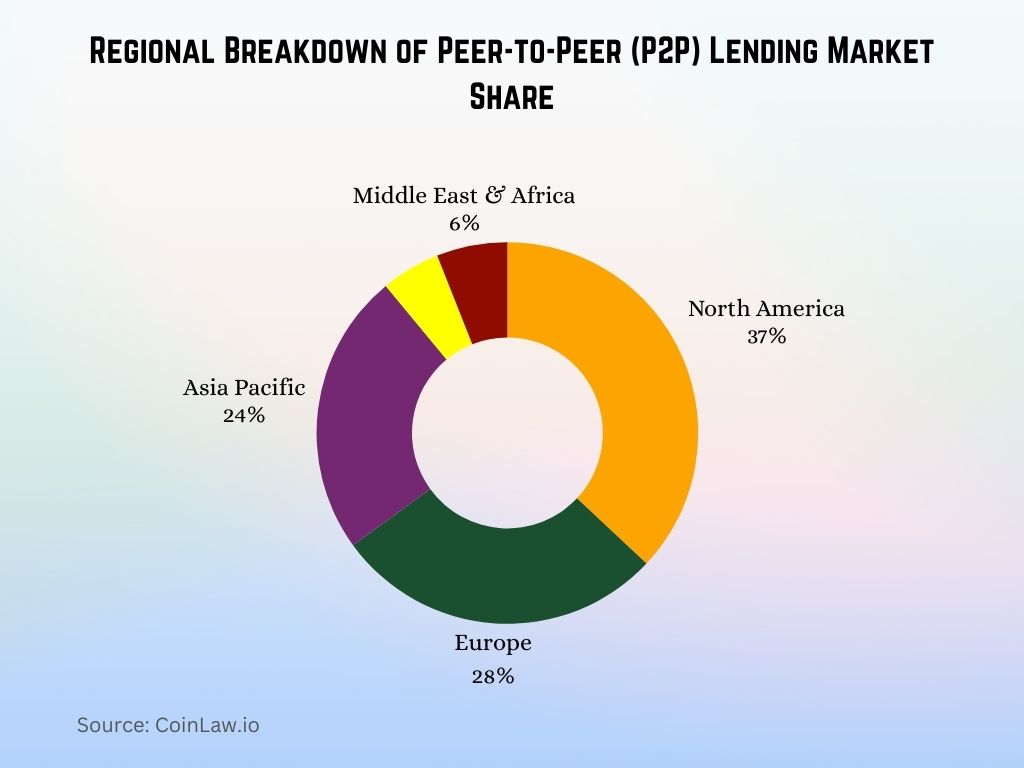
Market Size and Growth
P2P lending is transitioning from a disruptive alternative to a mainstream financing solution, with impressive market growth across various regions:
- The global P2P lending market was valued at $200 billion in 2023, with an estimated compound annual growth rate (CAGR) of 18% projected until 2028.
- Small businesses are a primary driver, comprising 35% of total P2P lending volume due to increased awareness and accessibility.
- In the US market, P2P loans represented about 5% of the total personal loan volume in 2023, up from 3.5% in 2022.
- The UK P2P lending sector grew by 12% last year, accounting for £4.1 billion in loans, with a notable rise in property-backed P2P lending.
- In Australia, P2P lending accounted for 2.3% of the country’s overall lending volume, totaling around AUD 1.2 billion in 2023.
- Student loans on P2P platforms saw a growth rate of 22% in 2023, reflecting a growing trend for educational financing outside traditional channels.
- The average annual return for P2P investors in 2023 was 6.5%, providing a lucrative option for individual and institutional investors seeking higher yields.
Peer-to-Peer (P2P) Lending Market Growth Projections (2024-2034)
- The global P2P lending market is projected to grow significantly over the next decade.
- In 2024, the market size is estimated at USD 139.80 billion.
- By 2034, it is expected to reach USD 1,380.80 billion, marking a nearly tenfold increase.
- The market will expand at a Compound Annual Growth Rate (CAGR) of 25.73% from 2025 to 2034.
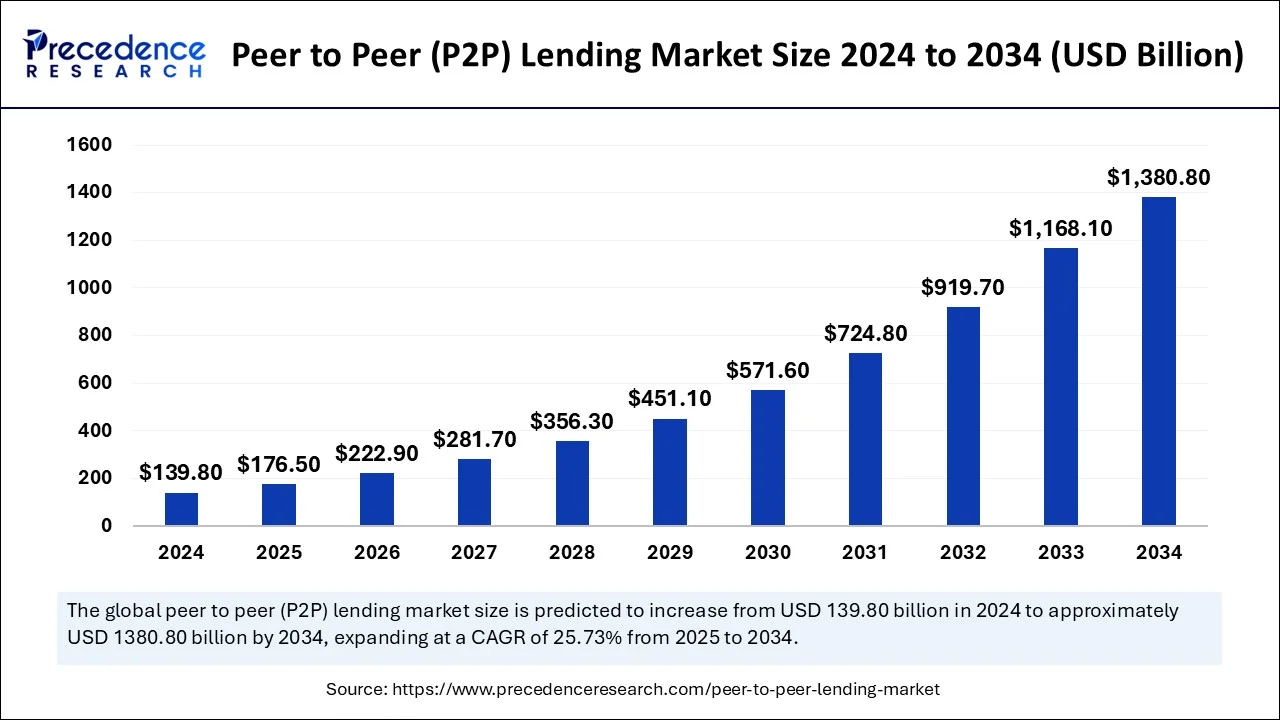
This rapid expansion highlights the increasing adoption of P2P lending as an alternative financing model.
Market Segmental Analysis
The P2P lending market is diverse, encompassing various types of loans and serving distinct borrower segments. Here’s a look at the main categories and how they performed in the past year:
- Personal loans constitute the largest segment, comprising 55% of the total P2P loan volume, with an average loan size of $10,000.
- Small business loans are the second-largest segment, accounting for 35% of the market, as businesses increasingly turn to P2P for flexible financing.
- Real estate-backed P2P lending expanded significantly, growing by 18% year-over-year in 2023 and reaching $35 billion in volume.
- Debt consolidation loans represent about 10% of the market, with borrowers seeking to refinance high-interest credit through lower P2P rates.
- Medical and healthcare loans on P2P platforms are emerging as a niche, with a 15% growth rate in 2023, particularly in markets with limited healthcare funding options.
- Green loans for eco-friendly projects saw a 20% increase in demand in 2023, with more platforms offering options dedicated to sustainable ventures.
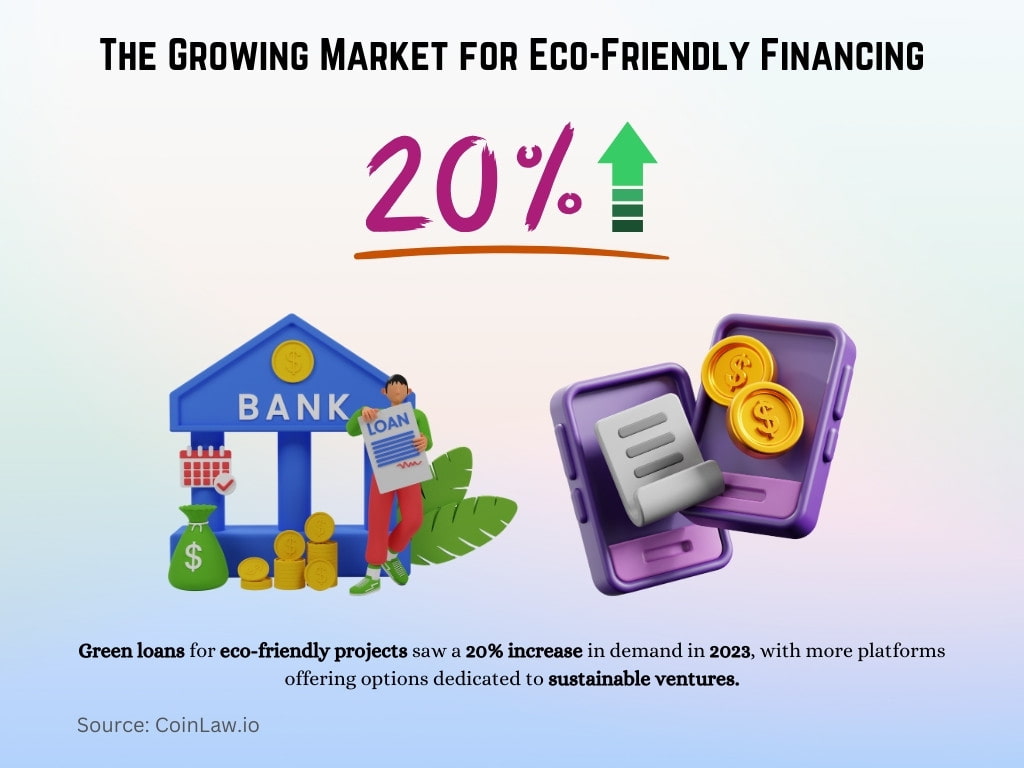
- Cryptocurrency-backed loans remain a small but growing segment, with double-digit growth as crypto adoption increases among borrowers and investors.
Regional Insights
The growth of P2P lending varies significantly by region, driven by differences in regulatory environments, digital adoption, and economic needs. Here’s a breakdown of key regions:
- Asia-Pacific remains the largest P2P lending region, led by China, where the P2P market volume reached $100 billion in 2023 despite regulatory crackdowns.
- North America saw 15% growth in 2023, with the US contributing the bulk, while Canada’s market grew by 8% due to rising demand for alternative lending solutions.
- In Europe, the United Kingdom is the leading market, holding a 30% market share within Europe, followed by Germany and France.
- Australia leads the P2P market in Oceania, with a market size of AUD 1.2 billion in 2023, growing primarily through business and consumer lending.
- The Middle East and North Africa (MENA) region saw a 12% increase in P2P lending in 2023, with the UAE and Saudi Arabia as notable contributors.
- Latin America experienced rapid growth, with Brazil and Mexico leading; the region’s market is projected to grow 25% annually as financial inclusion initiatives expand.
- Sub-Saharan Africa is emerging in P2P lending, with Nigeria and South Africa as key players, mainly in micro-lending and agricultural loans.
How Credit Scores Influence Personal Loan Sources
Online lenders are most commonly used by people with low credit scores:
- ~45% of individuals with a 300–579 (Poor) credit score take out loans from online lenders ,the highest usage among all score groups for this type of lender.
- Usage declines with better credit scores: only ~12% of those with 800–850 (Excellent) scores use online lenders.
Traditional banks are the preferred option for borrowers with higher credit scores:
- Loan usage increases with creditworthiness ,~62% of 670–739 (Good), ~70% of 740–799 (Very Good), and ~72% of 800–850 (Excellent) borrowers choose traditional banks.
- By contrast, only ~35% of those with a Poor score use banks for loans.
Credit unions show a consistent but moderate share across all credit tiers:
- Usage ranges between ~25% and ~33% regardless of credit score.
- Borrowers with Good (670–739) scores slightly favor credit unions at ~33%.

Key Market Trends
With P2P lending evolving, new trends are shaping the market and providing both opportunities and challenges for investors and borrowers alike.
- Digital transformation is central, with 80% of P2P transactions now completed via mobile apps, simplifying the borrowing process and expanding accessibility.
- AI-powered credit scoring is increasingly popular, with 45% of platforms utilizing AI to improve loan assessments and reduce default risks.
- Blockchain technology is being integrated by a growing number of platforms for secure, transparent transactions, especially in crypto-backed P2P lending.
- The rise of crypto-backed P2P loans has been significant, with volumes doubling in 2023 as cryptocurrencies become more mainstream.
- Green P2P loans are gaining momentum, with a 20% growth rate in financing for sustainable projects, appealing to eco-conscious borrowers and investors.
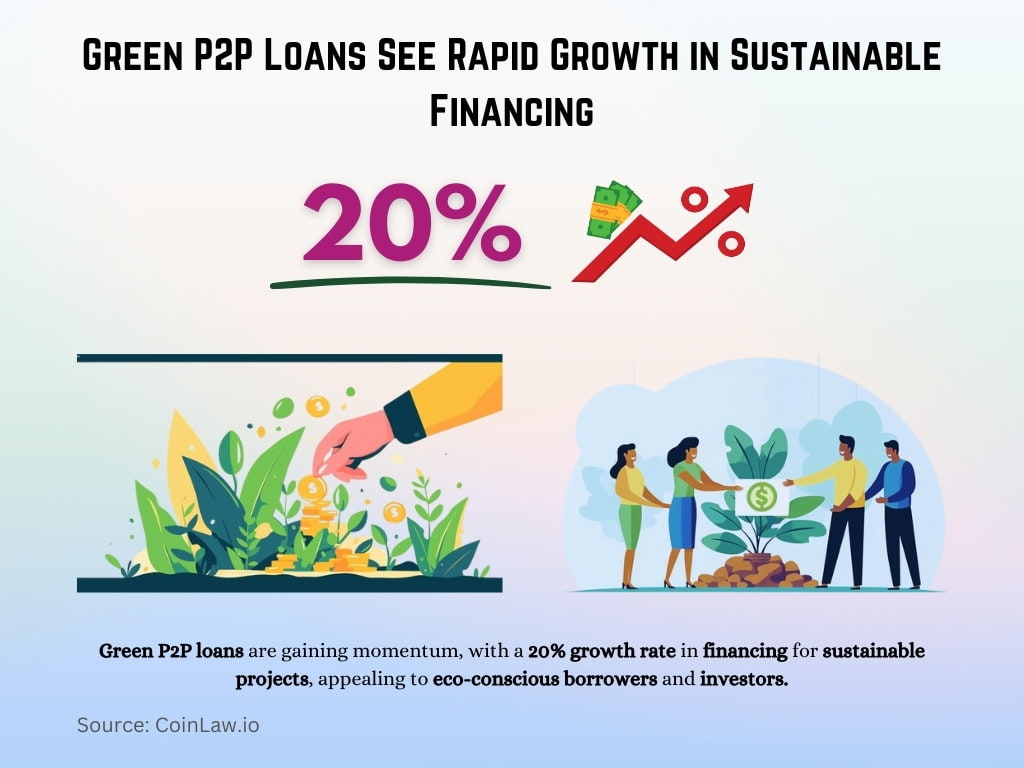
- Social lending models are expanding, where investors can fund loans to underserved demographics, supporting financial inclusion efforts globally.
- Cross-border lending has emerged, with platforms offering loans to borrowers in different countries, especially in Europe, where cross-border lending grew by 15% in 2023.
Market Dynamics
Several factors are driving the growth of P2P lending, from technological advances to shifting consumer attitudes. Understanding these dynamics is essential for anyone invested in the industry.
- Low interest rates in traditional banks have spurred individuals to explore P2P lending, which often offers 2-3% higher returns for investors.
- High demand for small business financing drives the market, as small businesses struggle to secure bank loans and turn to P2P platforms as alternatives.
- Digital financial literacy has improved globally, with 70% of new borrowers citing ease of use as a primary reason for choosing P2P loans.
- Investment diversification appeals to retail and institutional investors, with P2P lending offering returns that are less correlated with stock markets.
- COVID-19 accelerated the shift to online platforms; 45% of P2P borrowers began using these services during the pandemic due to restricted access to bank loans.
- The global rise in freelancer economies has fueled demand for P2P loans, as freelancers often find it challenging to secure traditional financing.
- Interest in ethical finance is growing, with P2P platforms that offer loans for socially responsible or eco-friendly projects seeing increased investor engagement.
Competitive Landscape
The P2P lending industry is crowded, with numerous platforms competing across regions and lending types. Here’s how the competitive landscape is shaping up:
- LendingClub is a top player in the US, with a loan volume of $3.8 billion in 2023, focusing on consumer and small business loans.
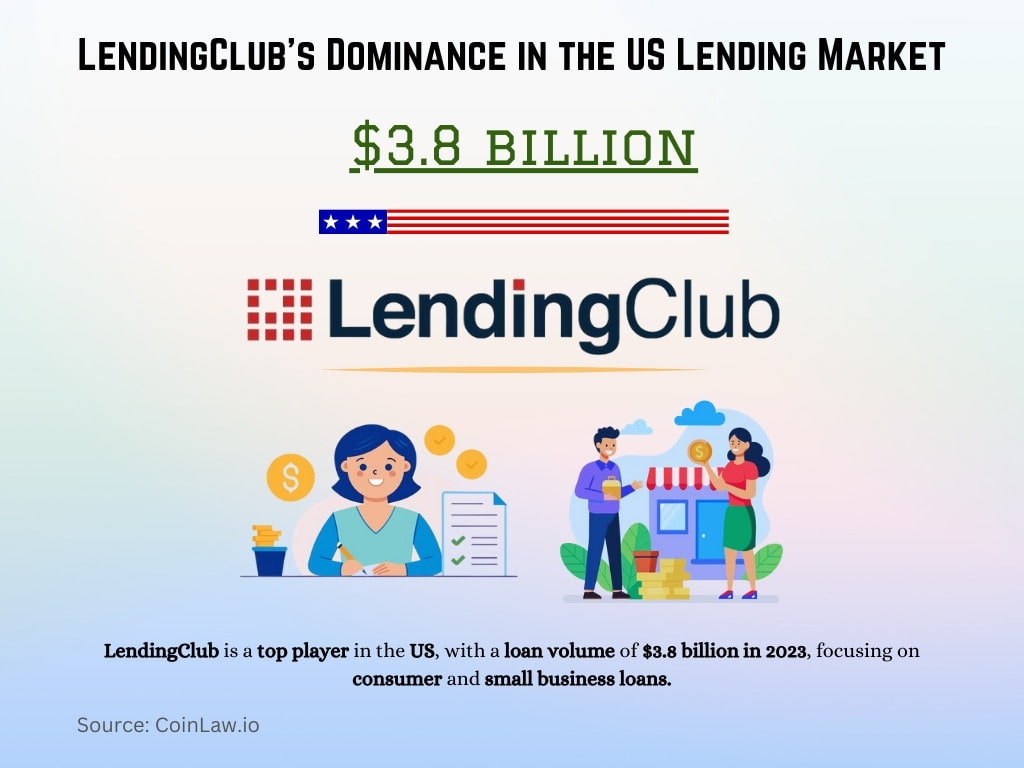
- Funding Circle dominates the UK market with a market share of over 25% in small business P2P lending.
- Prosper Marketplace is the second-largest P2P platform in the US, holding 30% of the consumer lending market in 2023.
- Zopa in the UK, one of the pioneers in P2P lending, has diversified into banking while still maintaining a strong lending base.
- RateSetter grew 10% in 2023, expanding into car loans, which now represent 20% of its portfolio.
- Bondora, popular in Europe, especially in Estonia, Finland, and Spain, recorded a 40% growth in 2023 with a user-friendly platform for consumer loans.
- Mintos continues to be the largest P2P platform in continental Europe, with €5 billion in loans funded across multiple countries and loan types.
Borrower and Lender Demographics
P2P lending platforms attract a broad range of users, from young borrowers looking to finance new projects to older investors seeking higher returns.
- Millennials and Gen Z accounted for 65% of borrowers in 2023, driven by digital adoption and a preference for non-traditional financial solutions.
- Investors aged 40-60 made up 55% of the lender base, valuing the higher yields offered by P2P lending as a diversification strategy.
- Business owners represent 35% of all borrowers, particularly in the small business segment, as banks continue to impose strict lending criteria.
- Women borrowers comprised 45% of personal loans on P2P platforms in 2023, an increase from 35% in 2022, showing growing trust in these platforms.
- First-time borrowers account for 50% of P2P lending users in emerging markets, with platforms serving as an entry point for those previously unbanked.
- Retirees and older investors are increasingly active in P2P, making up 15% of lenders in 2023, attracted by the potential for 6-8% annual returns.
- Young entrepreneurs in sectors like technology and e-commerce are turning to P2P lending, with 30% of loans in these sectors going to borrowers under 35.
Peer-to-Peer (P2P) Lending Market by Investor Type – 2025 Insights
- The total market size of the Peer-to-Peer (P2P) lending market is projected to reach USD 176.52 billion by 2025.
- Individual investors are expected to dominate the market, holding a 51.8% estimated market revenue share in 2025.
- Other key investor categories include:
- Institutional Investors (exact percentage not specified)
- Others, which include Wealth Management Firms, Family Offices, etc. (exact percentage not specified)
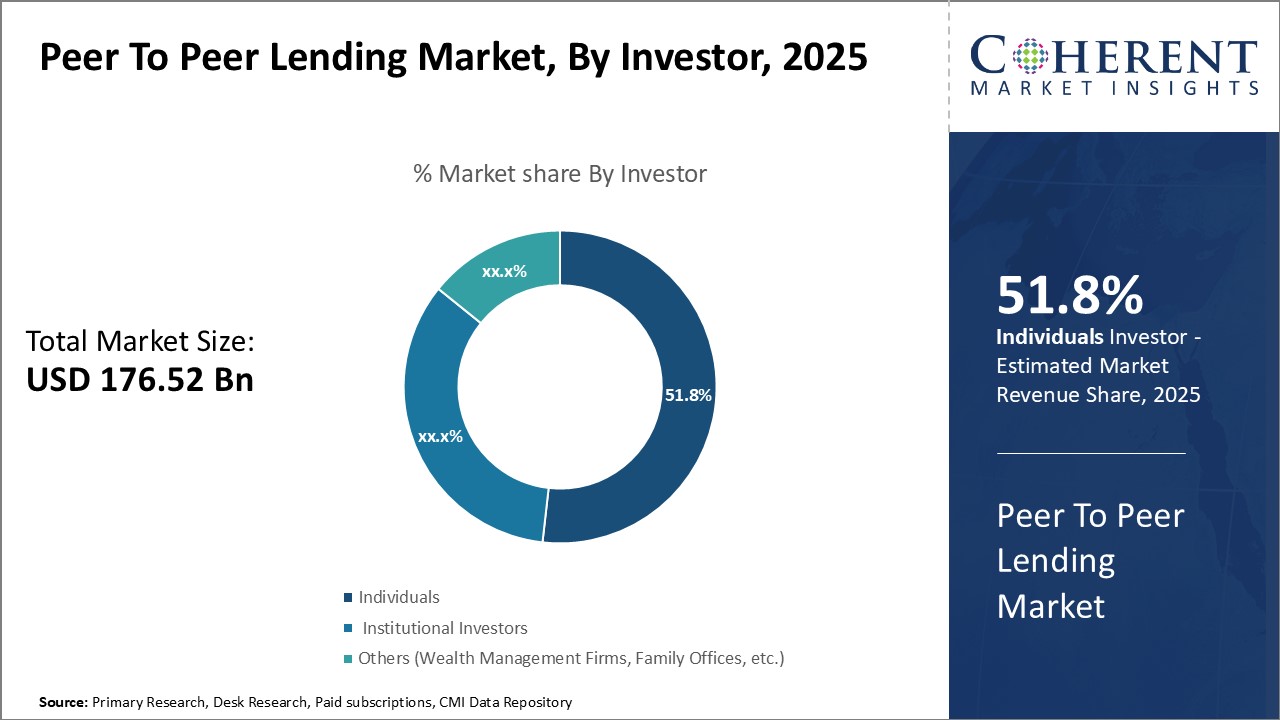
The data highlights the growing dominance of individual investors in the P2P lending space, emphasizing their significant role in the market’s expansion.
Default Rates and Risk Assessment
Risk assessment is a critical aspect of P2P lending as platforms strive to minimize defaults and protect investor returns. Here’s a closer look at default trends and how platforms are managing risk:
- The global average default rate for P2P loans remained steady at 4.5% in 2023, reflecting improvements in credit scoring technology.
- Consumer loans have a default rate of 3.2%, whereas small business loans show a slightly higher rate of 5.8% due to business market volatility.
- AI-powered credit scoring is now used by 60% of P2P platforms to assess borrowers, helping reduce defaults by 15% on average.
- Lenders can expect an average recovery rate of 55% on defaulted loans, thanks to improved debt recovery processes implemented by platforms.
- Risk-adjusted returns for P2P investors in 2023 were approximately 6.5%, providing a balanced return even after factoring in defaults.
- Collateralized P2P loans have gained traction, reducing the default risk; such loans account for 20% of the market in high-risk segments like real estate.
- High-risk categories, such as cryptocurrency-backed loans, show a default rate of 7%, highlighting the importance of cautious investing in these segments.
Top Reasons Why Peer-to-Peer (P2P) Lending Platforms Fail
- Repaying bank debt accounts for the largest share of failures, contributing to 33% of cases.
- 15% of failures are attributed to Other miscellaneous reasons, showing the variety of factors that can impact sustainability.
- Home renovation expenses represent 14% of the reasons borrowers default, impacting the platform’s loan recovery.
- Credit recycling, where loans are used to pay off other loans, makes up 11%, creating unsustainable debt cycles.
- Family celebration expenditures are responsible for 7% of failures, often due to non-essential borrowing.
- Vacation spending is cited in 5% of defaults, reflecting loans used for discretionary expenses.
- Buying a car contributes to 4% of cases where borrowers fail to repay their loans.
- Dentist-related expenses also make up 4%, highlighting healthcare-related borrowing.
- Education loans account for another 4%, which may not always result in immediate repayment ability.
- Establishing a business is responsible for 3%, often due to the risks associated with new ventures and startups.
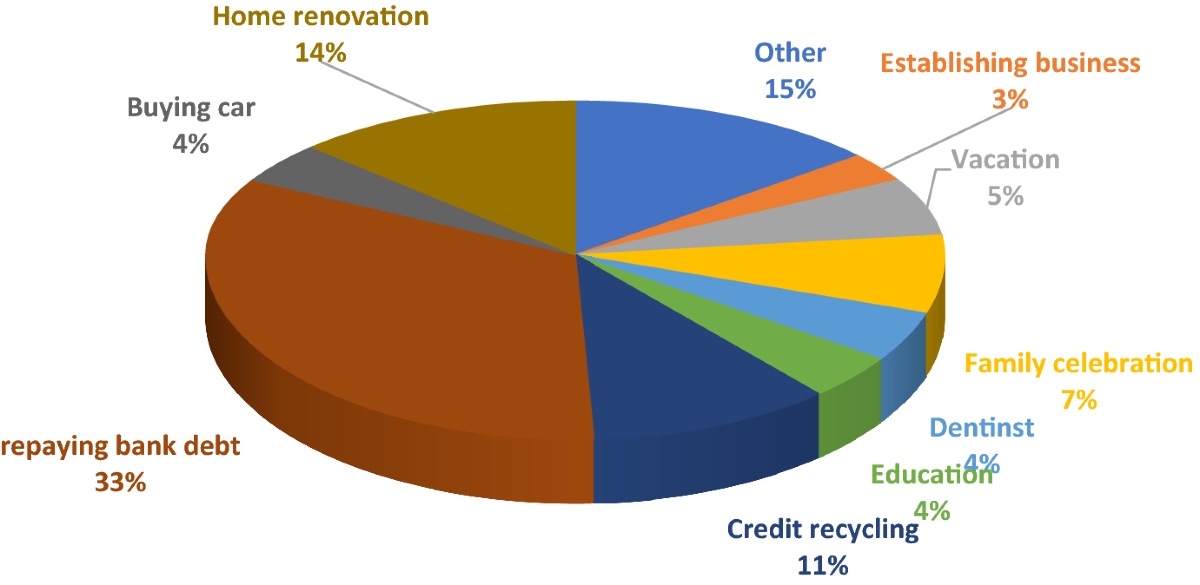
Technological Innovations
Technological advancements are propelling P2P lending into new territories, with innovations enhancing user experience, security, and lending efficiency.
- Blockchain is being used for transaction transparency and security, with 30% of platforms integrating blockchain to verify transactions and ensure loan authenticity.
- Machine learning algorithms help platforms better predict borrower reliability, reducing loan processing time by 25% on average.
- Smart contracts are gaining traction in the P2P space, automating loan agreements and enabling faster execution, especially in cross-border loans.
- Biometric authentication was adopted by 40% of platforms in 2023, improving account security and reducing fraud incidents by 30%.
- Real-time loan tracking has become standard on major P2P platforms, allowing lenders to monitor borrower repayments instantly.
- Artificial intelligence is used to identify fraudulent applications, successfully filtering out 90% of high-risk applications in 2023.
- Data analytics is empowering platforms to personalize loan offers, resulting in a 10% higher approval rate for suitable loan types based on user profiles.
Pros and Cons of Peer-to-Peer (P2P) Lending
✅ Pros of Peer-to-Peer Lending
- Lower Interest Rates for Borrowers: P2P lending platforms often offer lower interest rates compared to traditional banks. This makes borrowing more affordable, especially for individuals with good credit histories.
- Flexible Terms for Borrowers: Borrowers can benefit from flexible loan terms, allowing them to choose repayment schedules that fit their financial situations. This flexibility provides greater control and convenience for borrowers.
- Higher Returns on Investment for Lenders: P2P lending typically offers higher returns for investors compared to conventional savings accounts or bonds. Lenders can diversify their investment portfolios and potentially earn attractive interest on their funds.
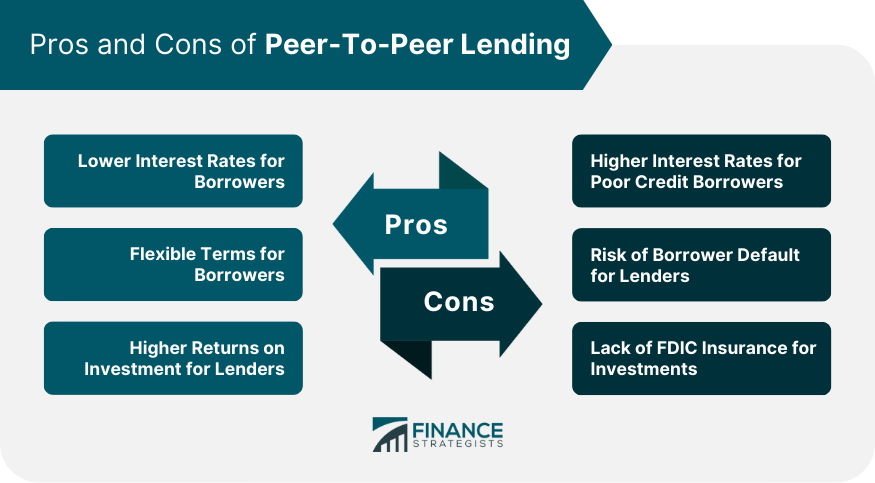
⚠️ Cons of Peer-to-Peer Lending
- Higher Interest Rates for Poor Credit Borrowers: Borrowers with poor credit scores may face significantly higher interest rates, making loans more expensive. This can lead to increased financial strain for high-risk borrowers.
- Risk of Borrower Default for Lenders: There’s always a risk that borrowers may default on their loans, resulting in financial losses for lenders. Unlike traditional banks, P2P platforms may have limited mechanisms for recovering defaulted funds.
- Lack of FDIC Insurance for Investments: Investments made through P2P lending platforms are not insured by the FDIC. This means there is no government protection if the platform fails or if loans go unpaid.
Regulatory Environment
The regulatory landscape for P2P lending is evolving, with governments worldwide implementing frameworks to protect consumers and ensure market stability.
- The US Treasury is working on comprehensive guidelines for P2P lending, aiming to enhance transparency and lender protections.
- European Union regulations, including the Crowdfunding Regulation (ECSPR) introduced in 2021, are strengthening cross-border P2P lending, allowing platforms to operate across EU countries with a unified license.
- China continues to implement strict regulations, reducing the number of P2P platforms by 80% since 2018 to protect investors after numerous high-profile defaults.
- In the UK, the Financial Conduct Authority (FCA) has enforced stricter due diligence requirements, resulting in a 12% drop in default rates on FCA-licensed platforms.
- Australia introduced a Consumer Data Right (CDR) framework in 2023, enabling P2P lenders to access more accurate financial data for risk assessments.
- India implemented a regulatory sandbox for fintech, allowing P2P platforms to test innovative models within controlled environments.
- The MENA region has started adopting P2P regulations, with the UAE and Saudi Arabia leading efforts to create guidelines for safe lending practices.
Worst Peer-to-Peer (P2P) Lending Platforms in 2024 (Based on Community Feedback)
- Lendermarket was ranked as the worst P2P lending platform, receiving 56 votes from users.
- EstateGuru follows with 46 votes, indicating significant dissatisfaction among its investors.
- Reinvest24 was voted poorly as well, accumulating 33 votes for underperformance or issues.
- Mintos, one of the more recognized platforms, received 21 votes, reflecting concerns raised by some of its users.
- Crowdestor earned 11 votes, suggesting a moderate level of negative feedback from the community.
- Both Bondster and Bulkestate received 8 votes each, highlighting their inclusion among the least favored platforms.
- IUVO Group attracted 6 votes, placing it lower on the list but still raising caution for potential investors.
- Fast Invest and VIAINVEST rounded out the list, each receiving 4 votes for poor performance or investor dissatisfaction.
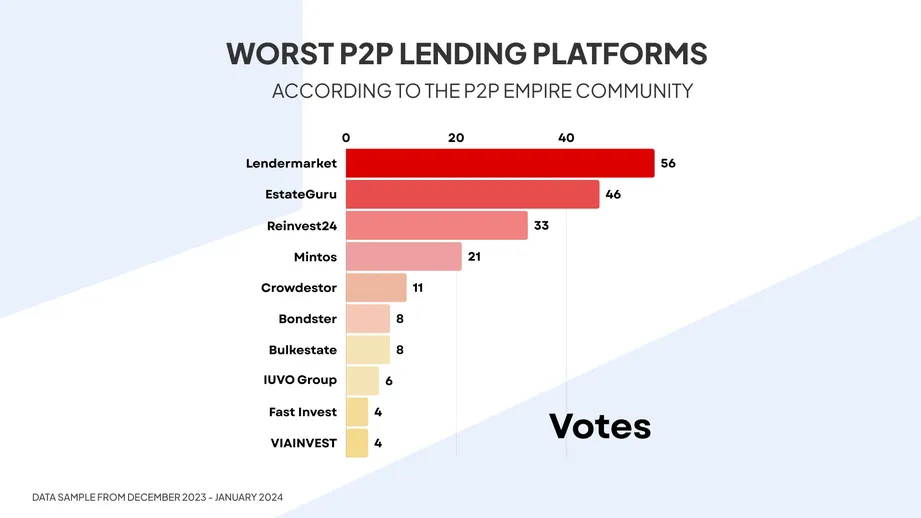
Recent Developments
- Market Growth: The global P2P lending market is projected to expand from $176.5 billion in 2025 to approximately $1,380.80 billion by 2034, indicating a compound annual growth rate (CAGR) of 25.73%.
- Technological Integration: Advancements in fintech have led to the incorporation of big data analytics, artificial intelligence, and blockchain technology into P2P lending platforms, enhancing security, transparency, and efficiency.
- Regulatory Actions: The Indian government has proposed stringent laws against unauthorized lending, including digital platforms, with penalties of up to seven years in prison and fines reaching 10 million rupees.
- Industry Challenges: The UK’s Financial Conduct Authority (FCA) apologized for delays in shutting down the fraudulent P2P lender Collateral, highlighting the need for improved regulatory oversight.
- Platform Evolution: Companies like Funding Circle have shifted focus from retail P2P loans to institutional lending, aiming for profitability and adapting to changing market dynamics.
Conclusion
As peer-to-peer lending matures, it continues to reshape the financial landscape by providing flexible, accessible, and often more affordable financing options. With global market growth projected at 18% annually, P2P lending is gaining traction across various regions and borrower types. Technological advancements are enhancing platform security and efficiency, while regulatory developments are bringing stability and instilling confidence among investors. The diverse applications of P2P lending, from small business and green loans to crypto-backed and real estate financing, are proof of the industry’s adaptability and relevance in today’s digital-first world. As the industry evolves, P2P lending is likely to remain a key alternative finance solution, bridging the gap between traditional banks and the new-age borrower.
Hover or focus to see the definition of the term.






